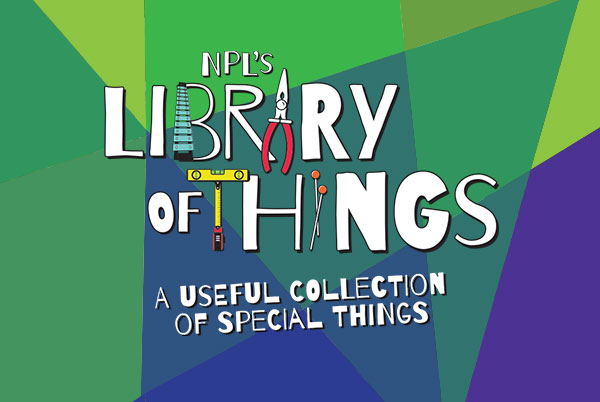
Crystal Deane: Talk about your ancestors’ experience with farming, including how they acquired and saved seeds.
Joan Clayton-Davis: A Lifetime of Farming...My family has been in the farming business since 1913 when my grandfather (Monroe Clayton, Sr. who was born a slave in 1862) at the age of 41 years old purchased 200 acres to establish the Clayton farm and homestead.
He later purchased 96 adjacent acres in 1919 and the original farm has been continuously operated by the descendants of Monroe Clayton, Sr. Additionally, two of his sons and their families purchased 127 acres, and 75 acres of adjoining properties that expanded the Clayton family farms in the New St. James Community of Timberlake, N.C.
The farm was an extended family members operation designed to make the Clayton family self-sufficient and to educate all members of the family and promote advancements for the African American community. The homestead consisted of a main house and two residential homes. My family grew such crops as tobacco, corn, wheat, milo, and raised livestock such as hogs, cows, and poultry until the early 1980s. We saved corn, lima beans, and string bean seeds as part of each year’s row crop production and vegetable gardening. The farm is now operated as a loblolly pine tree plantation of which I as serve as managing partner.
Do you still grow any of the beloved varieties your ancestors grew?
I grow purple top turnip greens and “creasy greens” (a.k.a. wild watercress) which grow wild across the fields in Piedmont, North Carolina where I grew up. Now you can find seeds available for purchase. Mix creasy greens with freshly grown turnip and mustard greens to make a delicious mixed greens dish resulting in outstanding pot likker. I cook the greens with salt pork or country ham, onions, and cayenne peppers. Of course, the greens and pot likker must be served with cornbread.
What is your own earliest memory from the garden?
There is no time that I don’t remember gardening in the Clayton family. My first memories of gardening are walking through the front door of our house (the main house), through the front yard and my grandmother’s flower garden, then down the pathway to the gate opening into the large kitchen garden that provided food for our extended family. The garden was adjacent to the orchard that included both fruit and nut trees (apples, pears, cherry, damson plums, figs, pecans, etc.).
I remember hating to shell lima beans, but mixing those lima beans with fresh corn made a wonderfully tasty meal that was always a treat.
Of all the vegetables you raise, which is the easiest to grow, the most difficult, and your personal favorite to pick and eat fresh from the garden?
- Easy: Crooked neck squash, various varieties of zucchini squash especially 8-ball squash, green beans, okra, peppers, cabbage, greens (turnip, mustard, kale, collards, lettuce), sweet potatoes, and melons are usually the easiest to grow. Tomatoes can be tricky, but are generally easy.
- Difficult: Green peas, beets, peanuts. If planted at the appropriate time as recommended on the planting chart for Zone 7, they will usually do well.
- Favorite to pick and eat fresh from the garden: Tomatoes, green peas, okra, mouse/cucamelon which are the size of grapes and taste like cucumbers.
Fresh tomato sandwiches cannot be described with mortal words, especially when made with homemade bread.
You are a Davidson County Master Gardener. What does it take to earn this achievement?
Master Gardeners are trained volunteers who use their knowledge and expertise to educate the public on horticulture and environmental stewardship using research-based information available through UT Extension. In addition to class requirements, students must complete 40 hours of volunteer service at a variety of Master Gardener Projects such as the Nashville City Cemetery, Rachel’s Kitchen Garden at The Hermitage, and the Demo Garden at Ellington Agriculture Center. You can find out more information by contacting UT Extension Davidson County Office at (615) 862-5995.
What do you think is the most common mistake of beginning gardeners?
Not dedicating adequate time to gardening and thinking they cannot grow things...Not taking advantage of local resources such as Master Gardeners, NPL Seed Exchange Programs, UT and TSU Extension.
Do you garden all year round, or do you take a break in the deep of winter?
I garden all year round, using the following schedule:
- Nov – Feb: Cleaning and prepare gardening area and tools, review gardening and seed magazines
- Feb – Mar: Start seeds for early spring garden, order seeds
- Mar – Apr: Plant early spring garden
- May – July: Plant and maintain warm season garden, begin preserving foods (canning, freezing, pickling, drying, begin seed saving
- Aug – Oct: Plant fall vegetable garden, seed saving, preserve fall garden produce
We are kicking off the fifth year of Nashville Public Library’s Seed Exchange. Of all the seeds we offer, okra seems to be one of the least checked out. I myself, LOVE okra. Do you have a recommended recipe to convince the okra haters what a wonderfully tasty vegetable it is?
Here are two ways to help people LOVE okra. First: try pickling young tender pods (2- 2 ½ inch okra) and you miss the slime. I like the recipe from the Ball Blue Book. It is easy and it’s a great recipe for people who are just beginning to make pickles or preserve foods; plus, I always use fresh dill and red cayenne peppers from my garden. My second recommendation: save the okra seeds to use as a coffee substitute/alternative.
Wow, I'm intrigued! How does that work?
A simple recipe is ½ cup okra for 6 cups coffee. Use pods that have gotten too large, or wait until they become hard. Harvest them, save the seeds by removing from the pods, roast them at 350 degrees, grind them in a food processor, put them in the coffee maker the same as coffee. Brew and enjoy the great caffeine free taste!
I’ve attended your gardening workshops at the library, and have been inspired by your knowledge and passion for growing plants and vegetables. How has gardening enriched your life?
Throughout each phase of my life, gardening has enhanced my appreciation of nature, the environment, and the need to protect it. It is therapeutic in providing opportunities to get outside, stay outside, exercise, dig in the dirt, get dirty, sweat, relax, listen to the sounds of nature, watch the cycles of the seasons, and commune with nature. Since retirement, it has allowed me to continue serving the community and meet new wonderful friends who have a similar passion and interest in gardening, and spend more time engaged in our family farm.
The 2018 Nashville Reads selection is The Potlikker Papers by John T. Edge. How do you like to cook greens, and what do you do with any leftover potlikker?
First I choose whether to cook greens with cured pork (ham hocks, salt pork, or other cured pork) or with a healthier choice like smoked turkey.
- Fill your pot about 1/3 full of water, add meat and begin cooking while washing greens.
- Wash greens several times to make sure they are free of any debris.
- Add your greens to the water until they wilt.
- Add one onion and two red cayenne peppers for a large pot of greens. Cook until done.
- Remove greens from the pot with a draining spoon and place in a serving dish.
Enjoy the potlikker as soup served immediately, or save in containers for later use. And of course, potlikker is best paired with freshly baked cornbread.
I'd like to thank Joan Clayton-Davis along with the rest of the Master Gardeners of Davidson County for volunteering their time, talents, and expertise in support of NPL Seed Exchange. Nashvillians' thumbs are greener because of you.
Happy gardening, everyone!
-crystal





